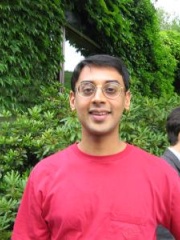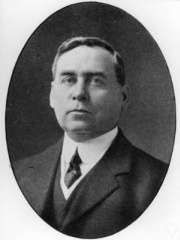
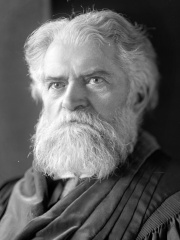
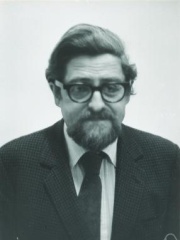
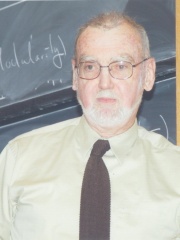
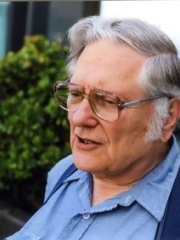


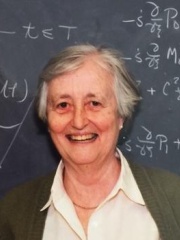
The Most Famous
MATHEMATICIANS from Canada
This page contains a list of the greatest Canadian Mathematicians. The pantheon dataset contains 1,004 Mathematicians, 11 of which were born in Canada. This makes Canada the birth place of the 23rd most number of Mathematicians behind Greece, and Romania.
Top 10
The following people are considered by Pantheon to be the top 10 most legendary Canadian Mathematicians of all time. This list of famous Canadian Mathematicians is sorted by HPI (Historical Popularity Index), a metric that aggregates information on a biography's online popularity. Visit the rankings page to view the entire list of Canadian Mathematicians.

1. John Charles Fields (1863 - 1932)
With an HPI of 66.22, John Charles Fields is the most famous Canadian Mathematician. His biography has been translated into 38 different languages on wikipedia.
John Charles Fields, FRS, FRSC (May 14, 1863 – August 9, 1932) was a Canadian mathematician and the founder of the Fields Medal for outstanding achievement in mathematics.

2. Simon Newcomb (1835 - 1909)
With an HPI of 64.67, Simon Newcomb is the 2nd most famous Canadian Mathematician. His biography has been translated into 41 different languages.
Simon Newcomb (March 12, 1835 – July 11, 1909) was a Canadian–American astronomer, applied mathematician, and autodidactic polymath. He served as Professor of Mathematics in the United States Navy and at Johns Hopkins University. Born in Nova Scotia, at the age of 19 Newcomb left an apprenticeship to join his father in Massachusetts, where the latter was teaching. Though Newcomb had little conventional schooling, he completed a B.S. at Harvard in 1858. He later made important contributions to timekeeping, as well as to other fields in applied mathematics, such as economics and statistics. Fluent in several languages, he also wrote and published several popular science books and a science fiction novel.

3. Louis Nirenberg (1925 - 2020)
With an HPI of 62.64, Louis Nirenberg is the 3rd most famous Canadian Mathematician. His biography has been translated into 29 different languages.
Louis Nirenberg (February 28, 1925 – January 26, 2020) was a Canadian-American mathematician, considered one of the most outstanding mathematicians of the 20th century. Nearly all of his work was in the field of partial differential equations. Many of his contributions are now regarded as fundamental to the field, such as his strong maximum principle for second-order parabolic partial differential equations and the Newlander–Nirenberg theorem in complex geometry. He is regarded as a foundational figure in the field of geometric analysis, with many of his works being closely related to the study of complex analysis and differential geometry.

4. Robert Langlands (b. 1936)
With an HPI of 60.96, Robert Langlands is the 4th most famous Canadian Mathematician. His biography has been translated into 33 different languages.
Robert Phelan Langlands, (; born October 6, 1936) is a Canadian mathematician. He is best known as the founder of the Langlands program, a vast web of conjectures and results connecting representation theory and automorphic forms to the study of Galois groups in number theory, for which he received the 2018 Abel Prize. He is emeritus professor and occupied Albert Einstein's office at the Institute for Advanced Study in Princeton, until 2020 when he retired.
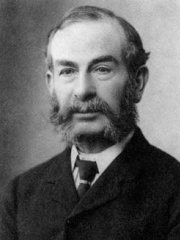
5. Edward Routh (1831 - 1907)
With an HPI of 58.14, Edward Routh is the 5th most famous Canadian Mathematician. His biography has been translated into 21 different languages.
Edward John Routh (; 20 January 1831 – 7 June 1907) was an English mathematician, noted as the outstanding coach of students preparing for the Mathematical Tripos examination of the University of Cambridge in its heyday in the middle of the nineteenth century. He also did much to systematise the mathematical theory of mechanics and created several ideas critical to the development of modern control systems theory.

6. William Kahan (b. 1933)
With an HPI of 57.44, William Kahan is the 6th most famous Canadian Mathematician. His biography has been translated into 29 different languages.
William "Velvel" Morton Kahan (born June 5, 1933) is a Canadian mathematician and computer scientist, who is a professor emeritus at University of California, Berkeley. He received the Turing Award in 1989 for "his fundamental contributions to numerical analysis."

7. Albert W. Tucker (1905 - 1995)
With an HPI of 56.40, Albert W. Tucker is the 7th most famous Canadian Mathematician. His biography has been translated into 16 different languages.
Albert William Tucker (28 November 1905 – 25 January 1995) was a Canadian mathematician who made important contributions in topology, game theory, and non-linear programming.

8. James Arthur (b. 1944)
With an HPI of 52.17, James Arthur is the 8th most famous Canadian Mathematician. His biography has been translated into 17 different languages.
James Greig Arthur (born May 18, 1944) is a Canadian mathematician working on automorphic forms, and former President of the American Mathematical Society. He is a Mossman Chair and University Professor Emeritus at the University of Toronto Department of Mathematics. He won the Wolf Prize in 2015 "for his monumental work on the trace formula and his fundamental contributions to the theory of automorphic representations of reductive groups".

9. Cathleen Synge Morawetz (1923 - 2017)
With an HPI of 52.00, Cathleen Synge Morawetz is the 9th most famous Canadian Mathematician. Her biography has been translated into 21 different languages.
Cathleen Synge Morawetz (May 5, 1923 – August 8, 2017) was a Canadian mathematician who spent much of her career in the United States. Morawetz's research was mainly in the study of the partial differential equations governing fluid flow, particularly those of mixed type occurring in transonic flow. She was professor emerita at the Courant Institute of Mathematical Sciences at the New York University, where she had also served as director from 1984 to 1988. She was president of the American Mathematical Society from 1995 to 1996. She was awarded the National Medal of Science in 1998.
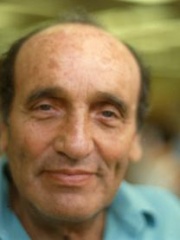
10. Irving Kaplansky (1917 - 2006)
With an HPI of 48.77, Irving Kaplansky is the 10th most famous Canadian Mathematician. His biography has been translated into 17 different languages.
Irving Kaplansky (March 22, 1917 – June 25, 2006) was a mathematician, college professor, author, and amateur musician.
People
Pantheon has 11 people classified as Canadian mathematicians born between 1831 and 1974. Of these 11, 4 (36.36%) of them are still alive today. The most famous living Canadian mathematicians include Robert Langlands, William Kahan, and James Arthur. The most famous deceased Canadian mathematicians include John Charles Fields, Simon Newcomb, and Louis Nirenberg.
Living Canadian Mathematicians
Go to all RankingsRobert Langlands
1936 - Present
HPI: 60.96
William Kahan
1933 - Present
HPI: 57.44
James Arthur
1944 - Present
HPI: 52.17
Manjul Bhargava
1974 - Present
HPI: 45.90
Deceased Canadian Mathematicians
Go to all RankingsJohn Charles Fields
1863 - 1932
HPI: 66.22
Simon Newcomb
1835 - 1909
HPI: 64.67
Louis Nirenberg
1925 - 2020
HPI: 62.64
Edward Routh
1831 - 1907
HPI: 58.14
Albert W. Tucker
1905 - 1995
HPI: 56.40
Cathleen Synge Morawetz
1923 - 2017
HPI: 52.00
Irving Kaplansky
1917 - 2006
HPI: 48.77
Overlapping Lives
Which Mathematicians were alive at the same time? This visualization shows the lifespans of the 7 most globally memorable Mathematicians since 1700.

